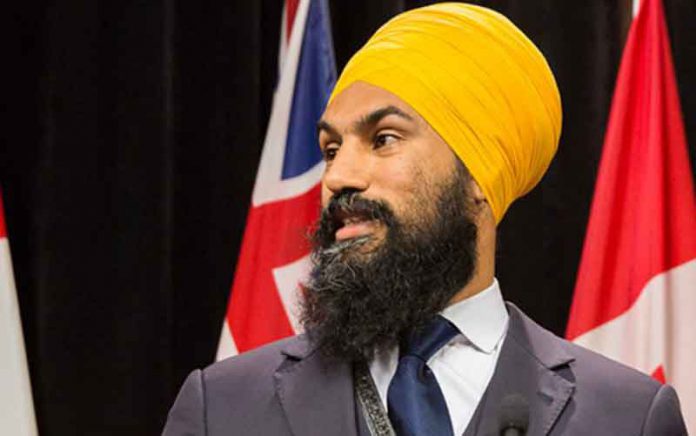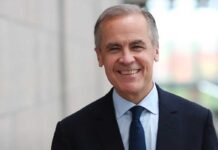THUNDER BAY – POLITICS 2.0 – In a major campaign announcement from St. John’s, NDP Leader Jagmeet Singh pledged to ensure that every Canadian will have access to a family doctor by 2030.
The commitment comes amid a worsening national shortage of primary care providers, with over 6.5 million Canadians lacking regular access to a family doctor. Singh is framing the proposal as a critical intervention to protect the future of Canada’s public health care system.
“Universal health care is one of the greatest things we’ve built together—but right now, millions can’t access it,” Singh said. “We’re ready to fix it.”
The NDP plan includes targeted funding, incentives for provinces, pan-Canadian licensure for doctors, and fast-tracking qualified international medical graduates already living in Canada. Notably, it also proposes infrastructure and support in Northern and rural regions—particularly relevant to communities across Northwestern Ontario, where shortages are often most severe.
Fact Check: Is This Promise Realistic?
While Singh’s proposal is bold, experts say the goal of guaranteeing a family doctor to every Canadian by 2030 is unlikely without major structural reforms and full provincial cooperation. According to a CTV News analysis, the largest barriers include a lack of new doctors entering family medicine, bottlenecks in medical licensing, and geographic distribution issues, especially in rural and Northern regions like Thunder Bay.
Health policy analysts also note that provinces—not the federal government—control health workforce planning and service delivery. Singh’s plan hinges on provincial participation in exchange for increased federal health transfers, but without mandates or agreements, the federal government can’t unilaterally assign doctors or dictate hiring.
In short, while the policy direction aligns with long-standing calls for systemic investment in primary care, the timeline and scope of Singh’s promise make it an ambitious political goal rather than a guaranteed outcome. That said, it does shine a spotlight on one of the most pressing issues facing Canadian families today.
Comparing Federal Party Promises on Access to Family Doctors
Access to primary healthcare, particularly family doctors, remains a critical concern for Canadians. As of April 2025, the major federal parties—the New Democratic Party (NDP), Liberal Party, and Conservative Party—have articulated distinct strategies to address this issue.
New Democratic Party (NDP):
NDP Leader Jagmeet Singh has pledged to ensure that every Canadian has access to a family doctor by 2030. The NDP’s plan includes providing an additional 1% in Canada Health Transfer funding to provinces that guarantee access to primary care, streamlining the process for American doctors to practice in Canada, and funding residencies for internationally trained doctors residing in the country. Singh emphasizes that this initiative is vital to prevent the erosion of public healthcare and to counteract the rise of private clinics charging for services.
Liberal Party:
The Liberal Party has committed to improving access to family doctors through a $3.2 billion investment aimed at hiring 7,500 new family doctors, nurses, and nurse practitioners. This initiative seeks to address the challenges millions of Canadians face in accessing primary care and to enhance the universal, public healthcare system. Liberal Party of Canada
Conservative Party:
The Conservative Party, under Leader Pierre Poilievre, has proposed the creation of a “Blue Seal” national professional testing standard. This initiative aims to expedite the licensing process for qualified professionals, including doctors and nurses, to address healthcare workforce shortages and improve access to medical services. Conservative Party of Canada
Analysis:
While all three parties recognize the importance of enhancing access to family doctors, their approaches differ:
-
NDP: Focuses on conditional funding incentives for provinces, streamlining foreign credential recognition, and expanding residency positions for internationally trained doctors.
-
Liberals: Emphasize direct federal investment to increase the number of healthcare professionals through targeted hiring initiatives.
-
Conservatives: Advocate for regulatory reforms to simplify and accelerate the licensing of healthcare professionals, aiming to bolster the workforce more efficiently.
Each plan presents potential benefits and challenges, reflecting the parties’ differing philosophies on federal-provincial collaboration, regulatory frameworks, and investment strategies in healthcare.
What It Means for Thunder Bay
In Northern Ontario, where doctor shortages are often the most acute, especially in First Nations and remote communities, Singh’s promise resonates. Proposals to support housing for doctors, simplify licensing for international physicians, and reduce bureaucratic burdens could have meaningful regional impact. But the success of the plan will depend on how—and whether—provinces like Ontario engage.






